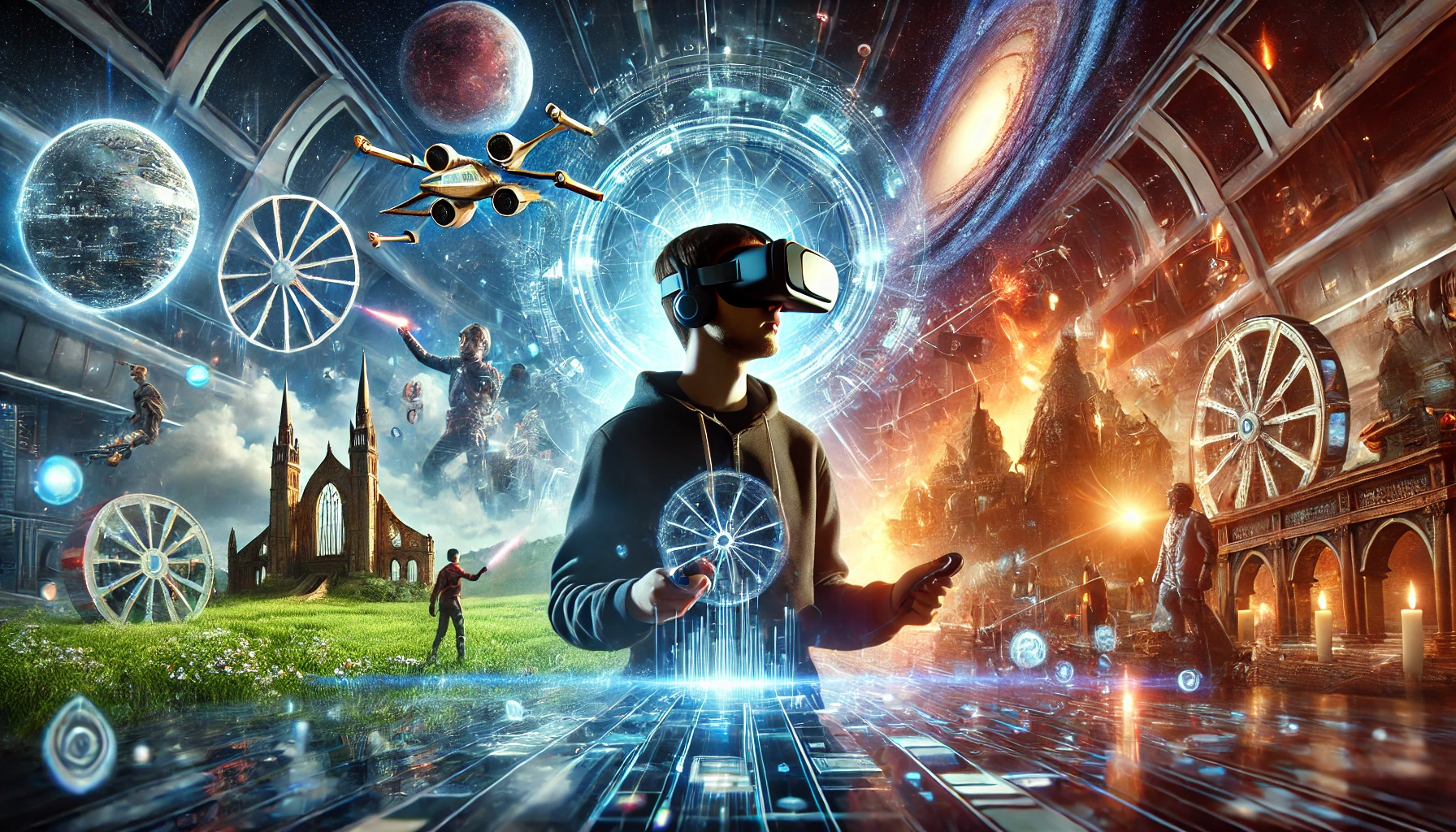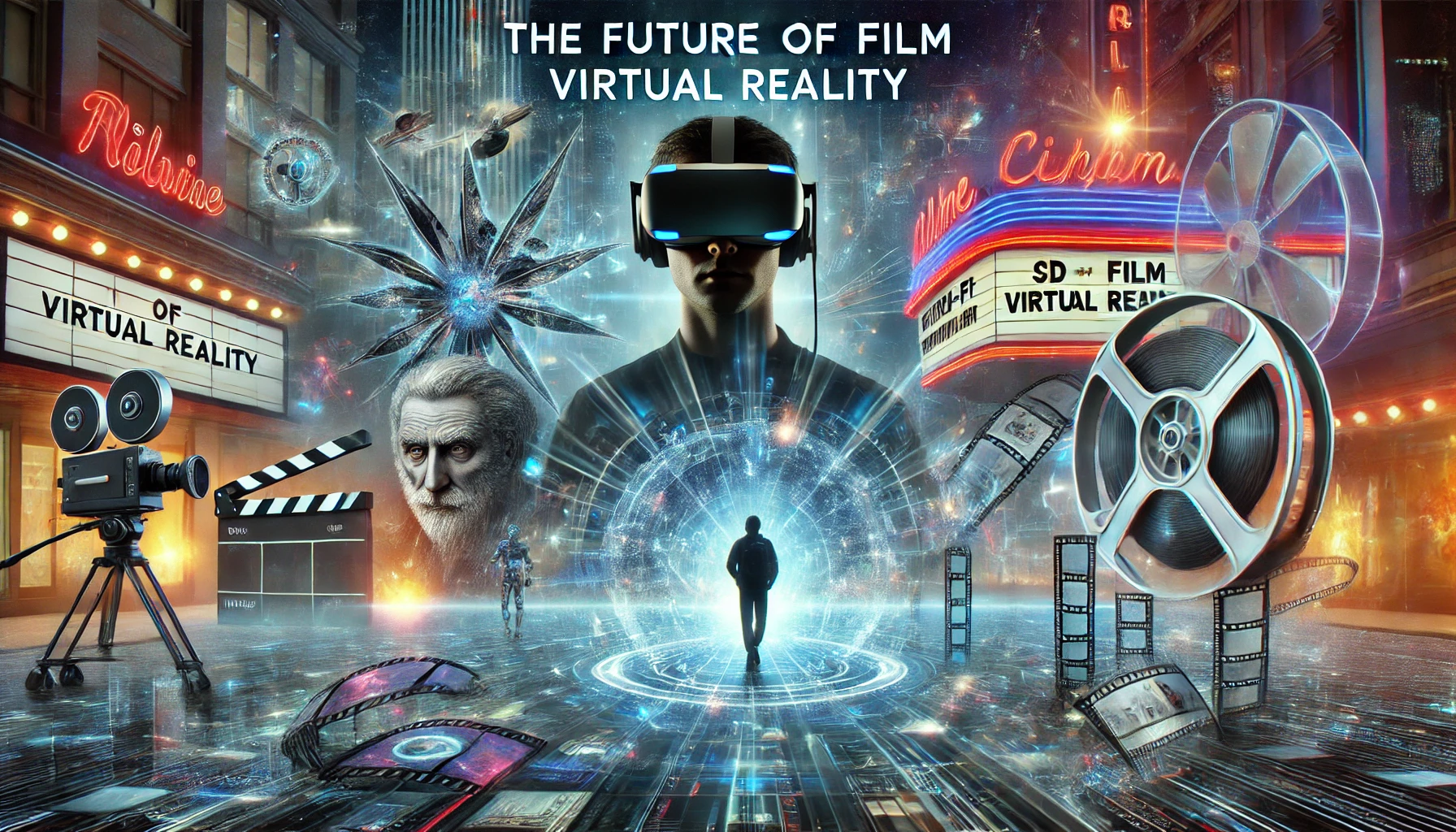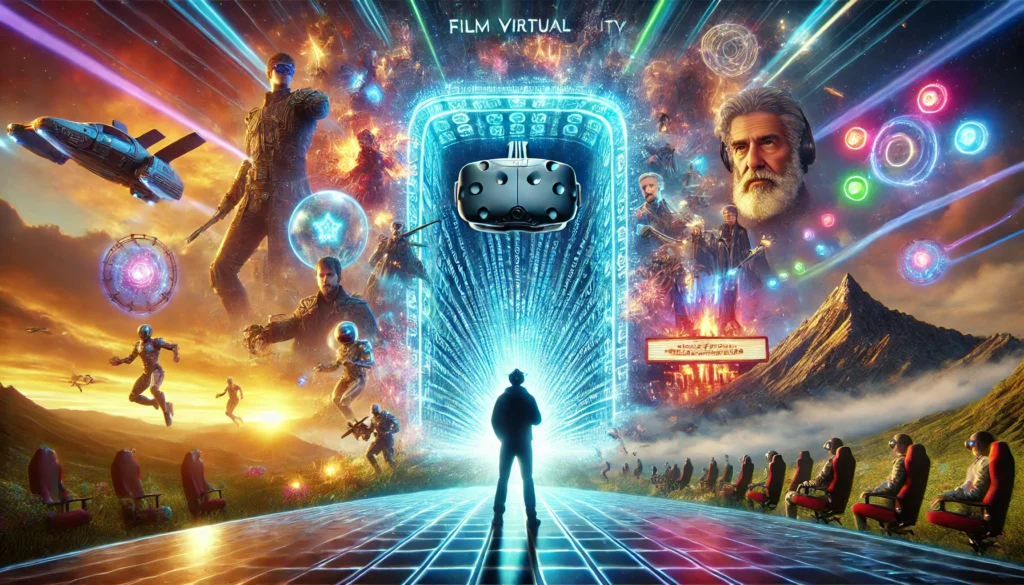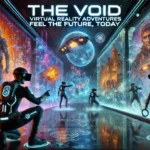Imagine stepping into a film where you’re not just an observer but an active participant in the story. With virtual reality (VR), this is no longer a distant dream but an evolving reality. According to recent studies, the global virtual reality market in the media and entertainment sector is projected to grow significantly, reaching billions in value by 2030.
Film virtual reality is a groundbreaking shift in how stories are told, allowing audiences to engage with narratives on an unprecedented level. Unlike traditional cinema, where the viewer is passive, VR transforms the audience into an integral part of the story. This article explores how film virtual reality is revolutionizing storytelling and opening new frontiers for cinematic adventures.
The Evolution of Cinema to Virtual Reality
Brief History of Cinema
- From Silent Films to Sound and Color: Cinema has evolved remarkably since its inception, moving from silent black-and-white reels to vibrant, sound-filled masterpieces.
- The Rise of 3D and IMAX: Technologies like 3D and IMAX have enhanced the visual experience, making films more immersive.
The Advent of Virtual Reality
- Emergence of VR Technology: VR emerged as a promising medium, initially in gaming, before finding its way into film.
- First Experiments in VR Films: Early VR short films paved the way for today’s immersive storytelling.
What Makes Film Virtual Reality Unique?
Immersive Storytelling
Virtual reality breaks the “fourth wall,” placing viewers directly within the story world. For instance, in VR films like The Key, audiences are transported into an emotionally engaging narrative.
Interactivity
- Viewers can influence or explore the narrative, blending game mechanics with traditional storytelling.
- This interactivity allows for a deeper connection with the story, enhancing engagement.
Empathy and Connection
Film virtual reality is an empathy engine, enabling audiences to experience life from another perspective. For example, VR documentaries provide intimate insights into global issues, fostering understanding and compassion.
Technical Foundations of Film Virtual Reality
VR Equipment
- Headsets: Devices like Oculus and HTC Vive bring immersive films to life.
- Spatial Audio and Haptic Feedback: These technologies enhance realism, making scenes feel tangible.
360-Degree Filmmaking
- Filmmakers design worlds in every direction, requiring unique choreography and lighting.
- Editing becomes a challenge due to the continuous nature of 360-degree visuals.
Software and Platforms
- Tools like Unreal Engine and Unity are vital for creating VR films.
- Platforms such as YouTube VR and Oculus Store make these experiences accessible to viewers.

Examples of Cinematic Adventures in VR
Notable VR Films
Films like Wolves in the Walls showcase VR’s potential to create compelling narratives that engage viewers like never before. These projects blend stunning visuals with emotionally charged stories.
Collaborations with Gaming
Hybrid projects like Star Wars: Vader Immortal merge VR storytelling with interactive gaming elements, allowing users to both explore and interact with immersive narratives in real-time.
VR Festivals and Awards
Events like Tribeca Immersive and Venice VR Expanded highlight the best in VR filmmaking, offering a platform for creators to showcase their groundbreaking work to global audiences.
Benefits of Film Virtual Reality
For Viewers
- Immersion: Experience stories in a deeply personal way, with unparalleled engagement.
- Engagement: Become an active participant rather than a passive observer, redefining how we consume media.
For Creators
- Innovation: Push the boundaries of traditional storytelling, experimenting with cutting-edge techniques.
- Flexibility: Explore unconventional narratives and creative possibilities not feasible in traditional formats.
For the Industry
- New Revenue Streams: Capitalize on the growing interest in VR technology and its applications.
- Broader Audience Base: Attract tech-savvy viewers seeking novel and engaging experiences in media.
Challenges Facing Film Virtual Reality
Technical Barriers
- The high cost of VR equipment for creators and audiences makes widespread adoption a challenge.
- Steep learning curves for production teams unfamiliar with VR technology can slow progress.
Creative Limitations
- Balancing interactivity with coherent storytelling requires innovative approaches.
- Overcoming motion sickness and discomfort for viewers remains a significant hurdle.
Market Adoption
- Limited reach due to the niche audience currently engaged with VR.
- Educating consumers about VR’s potential and value in cinema is crucial for expansion.

The Future of Film Virtual Reality
Technological Innovations
- Advancements in wireless VR headsets and AR/VR integration are paving the way for more accessible and seamless experiences.
- AI-driven VR experiences that adapt to individual users’ preferences promise to create tailored cinematic journeys.
Mainstream Adoption
- Predictions suggest VR films will become mainstream entertainment as the technology becomes more affordable and widely understood.
Expanding Possibilities
- Cross-industry collaborations, including education, healthcare, and tourism, will influence VR storytelling, opening doors to new use cases and creative expressions.
Conclusion
Film virtual reality is the gateway to unprecedented cinematic adventures, transforming how we tell and experience stories. It merges creativity with technology, offering opportunities for deeper engagement, empathy, and innovation. As VR technology evolves, it has the potential to redefine not only cinema but also our broader understanding of storytelling. Explore the world of VR films and step into a story like never before.
FAQs
1. What is film virtual reality?
Film virtual reality combines traditional filmmaking techniques with virtual reality technology to create immersive, interactive cinematic experiences. It allows viewers to become active participants in the narrative.
2. How does VR enhance cinematic storytelling?
VR allows audiences to step into the story, interact with the narrative, and experience scenes from a first-person perspective, fostering deeper engagement and emotional connection.
3. What are some notable VR films?
Examples include The Key, Wolves in the Walls, and Star Wars: Vader Immortal. These films showcase VR’s storytelling potential and its ability to immerse viewers fully.
4. What equipment is needed for VR films?
VR films require headsets like Oculus or HTC Vive, spatial audio systems for realistic soundscapes, and often haptic feedback devices to enhance the sensory experience.
5. What challenges does VR filmmaking face?
Key challenges include high costs, technical barriers, balancing interactivity with coherent storytelling, and addressing viewer discomfort such as motion sickness.



